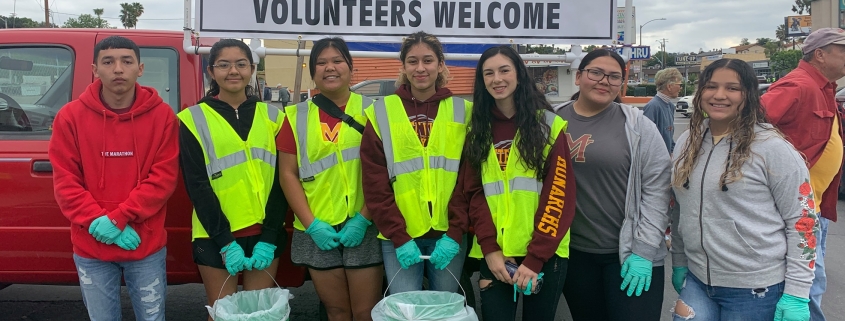Five Youth Engagement Strategies that Work (Even During a Pandemic)
Youth can be the most effective advocates and change makers. But for those of us in public health, engaging youth during the pandemic has been challenging for a myriad of reasons (zoom fatigue tops the list). In addition, students have busy schedules, competing interests and limited availability. This article provides five how-tos from three professionals with years of experience leading youth groups: IPS Program Manager Jovita Arellano, IPS Prevention Specialist Ana Hernandez and IPS Community and Youth Organizer Kate Santilena.
Students need flexibility
Youth and young adults are facing “zoom fatigue,” anxieties over what’s to come and many challenges that can make it hard to fully engage. It is crucial to be flexible. Listen to students and their needs. Kate makes sure to get student input on what time and day works best for her students to maximize attendance. A bonus of virtual meetings is that students can join from any location. But as we transition back to in-person, it’s a great idea to get input on a central location to meet that can be easily accessible for students.
Also allow for flexibility with the flow of content. Kate’s work is centered around alcohol and other drugs (AOD) prevention, but she also incorporates other aspects of public health to broaden students’ knowledge and keep them engaged. “We did still include AOD [education], but I wanted to tap into other things like mental health, nutrition, physical activity and the environment because public health is everywhere and everything.” Flexibility in content allows students to expand their horizons.
Keep it fun and have fun
No matter the age group, everyone likes to have fun, according to Ana, who runs the Young Advocates program for the Binge and Underage Drinking Initiative. She occasionally likes to have “silly discussions” to liven things up before the meeting and allow for a welcoming environment.
“Make sure you’re having fun and enjoying the work with youth,” Jovita explains. “Students have to see your passion in your work. If you are genuinely enjoying your time with them [the students], then they will also engage.”
Connections are key for a greater reach
Partners can help you identify the students you want to connect with. School counselors, teachers and principals of the school you will recruit students from is a great way to get connected with youth. For the young adult population, start identifying college campus representatives, professors and advisors who know the student body. You can also use online platforms like Handshake as a tool to recruit.
Partnerships also allow for youth-serving organizations to come together and collectively build students up. IPS Youth Coalition is a chapter of Friday Night Live in San Diego, which allows for shared learning experiences with youth from other chapters, friendly competition, and in the near future, camping trips, conferences and outdoor adventures.
Give students a good reason to come back
Community service hours are a great incentive for high school students to join your program. Tracking and maintaining sign-in sheets (google forms works great in the on-line space) can help you provide students with their completed hours for the duration of the program. They can use those community service hours on their college applications or to meet a school graduation requirement.
College-aged students can get real world experience by joining your program. Ana is working with college campuses to offer work study payment so students can get monetary assistance while also getting experience.
“Why should I join?” is a question you should ask yourself from a student perspective. Make sure to highlight the benefits in materials and during outreach. Jovita says she emphasizes a range of student benefits, like learning to be comfortable with public speaking, getting practice voicing opinions, meeting elected officials, connecting with leaders in the community, doing a report on their coalition work for school, earning extra credit, becoming school and community leaders, and learning to take pride in their work.
Social media is your friend
Social Media is KEY. Youth are scrolling on social media pages and parents also use it as a tool to look for opportunities for their teens. Social media is an easy way to get your message out and to advertise your program. Have a page where you can easily share and recruit students, and have an online presence. Kate says, “Before, we were only working with two schools when we were in person, but now we work with six high schools in the area. We used social media to promote our program.” Instagram is a great place to start. Remind is another great tool to send out mass message reminders about upcoming meetings and events.
The connections you build with youth will help advance your work. But the biggest benefit is making a positive impact in a young person’s life.
If you would like to follow IPS’s youth efforts, please follow:
East County Youth Coalition: @eastcountyyc
South Bay Youth 4 Change: @sby4c_
Young Advocates: @youngadvocatessd
Author:
Nancy Verdin
Special Programs Manager, IPS
Nancy Verdin is a Special Programs Manager at the Institute for Public Strategies, a Southern California-based nonprofit that works alongside communities to build power, challenge systems of inequity, protect health and improve quality of life.



